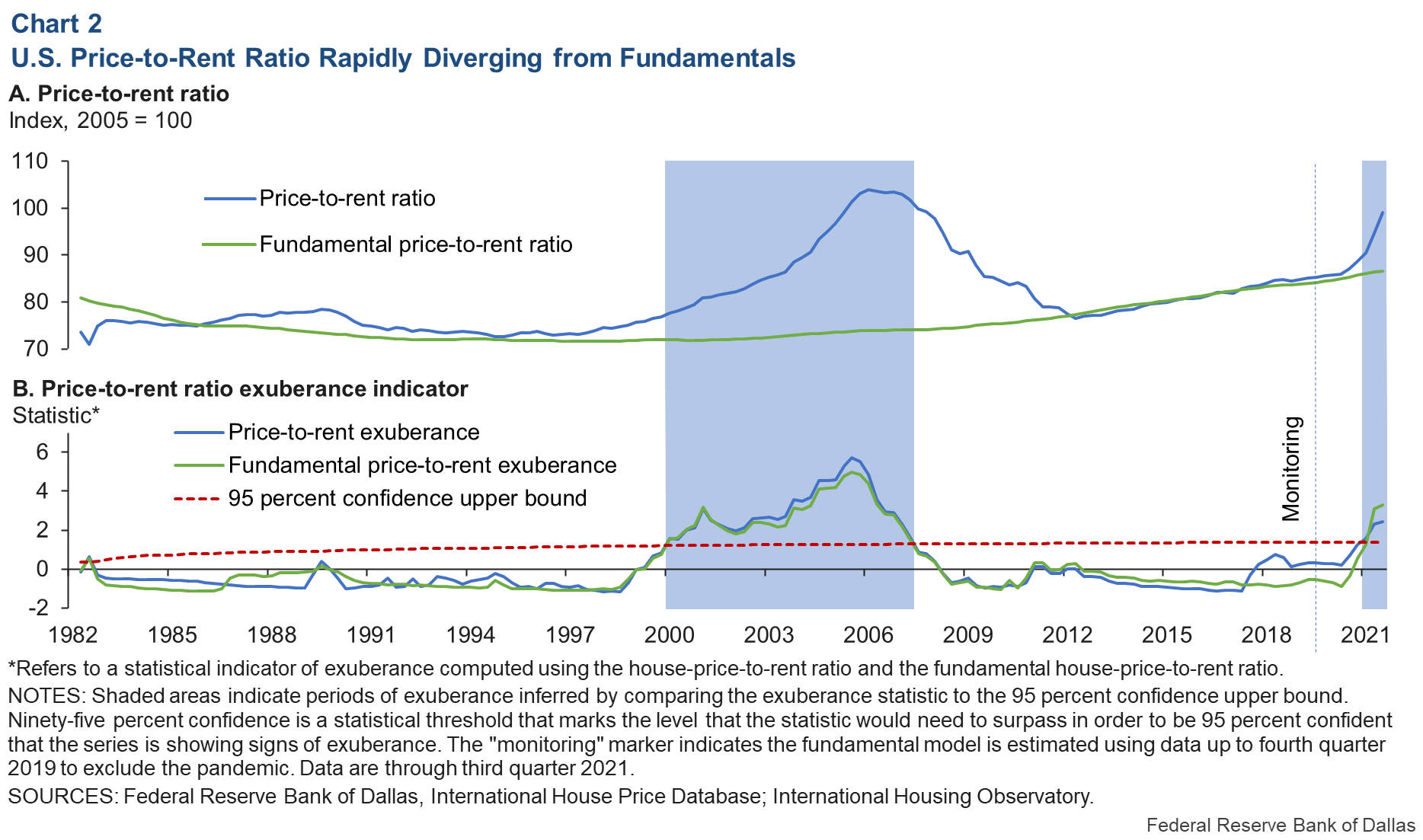Inman News
For months, the rise in home prices was in line with underlying indicators. Now, it may have gone too far, a Dallas Fed report suggests.
For two years, an array of real estate experts has argued that pandemic home-price surges were the result of a fundamentally sound — if imbalanced — housing market.
But in recent months, a team of researchers at the Federal Reserve Bank of Dallas and elsewhere has uncovered signs of an additional possible cause: a large group of buyers acting on a shared belief that today’s record price increases will continue.
Key signs of a possible bubble — including an exponentially rising price-to-rent ratio — may point to the need for an eventual price correction in the U.S. housing market, according to a report this week from some of the bank’s economists, analysts and academic partners.
It’s the first time since the early 2000s that some of these indicators have been recorded this far outside of normal bounds.
“The resulting fundamental-driven higher house prices may have fueled a fear-of-missing-out wave of exuberance involving new investors and more aggressive speculation among existing investors,” the report’s authors write.
This doesn’t mean that a price correction would cause another global financial meltdown, the economists say.
Today’s buyers remain in better financial shape, and are less reliant on debt for their home purchases. Policymakers can also use the last crisis as a guide for acting early, preventing the worst potential outcomes of a future drop in home prices.
But such breakneck price growth can’t coexist with recent interest-rate hikes forever. Buyers are already feeling the budget squeeze from recent home purchases, a reality that is likely to worsen if the current trends continue.
One key trend the researchers have watched closely is the divergence between a home’s price and how much rental revenue that home could produce. With the right assumptions, rents can serve to ground purchase prices in reality, at least from the standpoint of homes as an investment.
To some extent, the researchers say, home prices were already expected to rise more quickly than rents in recent years, in part because of historically low long-term interest rates.
But those fundamentals alone don’t fully explain the exponential growth in price-to-rent ratio throughout 2021, which is “comparable to the run-up of the last housing boom,” they argue.
Chart from Federal Reserve Bank of Dallas
If lagging rent growth points to market prices that are growing quickly overvalued, household income holds clues about when it might lead to widespread affordability issues.
Throughout much of 2021, U.S. stimulus income and wage growth during the pandemic kept the housing market’s price-to-income ratio within somewhat expected bounds of growth. But affordability was eroding quickly enough by the third quarter of 2021 that it could soon reach a point where the market fundamentals could no longer explain the trend.
“These data — unlike our previous metrics — do not yet display evidence of explosiveness in the third quarter of 2021,” the report reads.
Taken together, the metrics point to a market in 2021 that may have been in the early stages of becoming “untethered” from market fundamentals. In the housing bubble that led to the Great Recession, this process ran mostly unchecked for roughly seven years.
Today, market players and government officials are in a better position to diagnose signs of a bubble, the report argues.
“Thus, they are in a more-informed position to react quickly and avoid the most severe, negative consequences of a housing correction,” the authors write.

